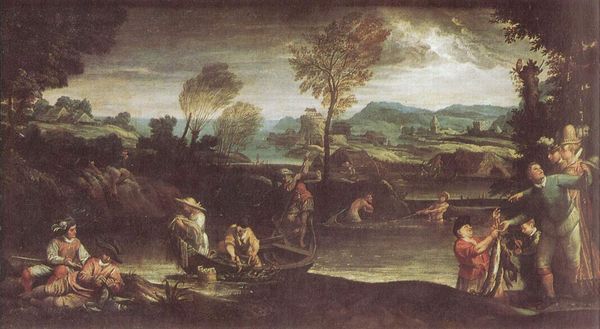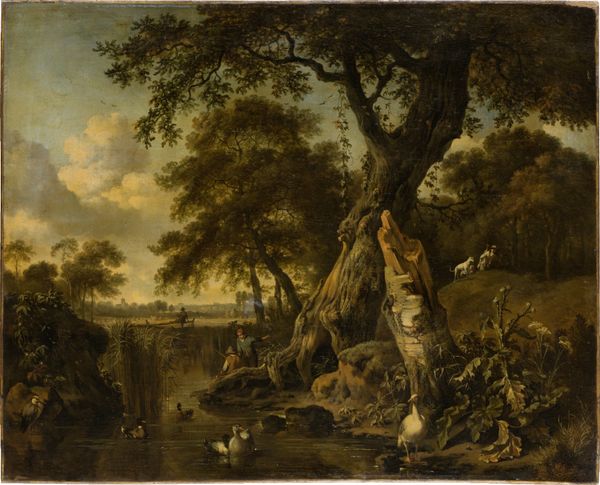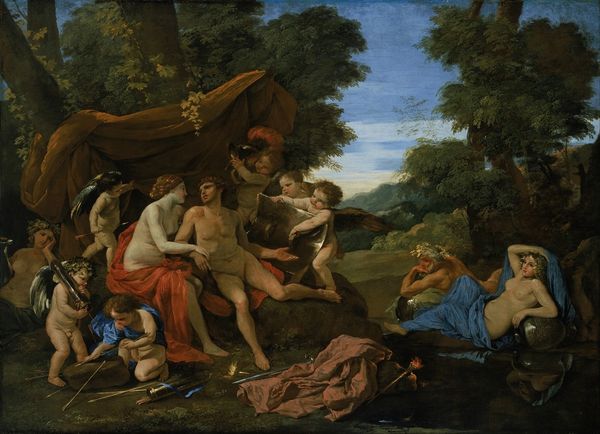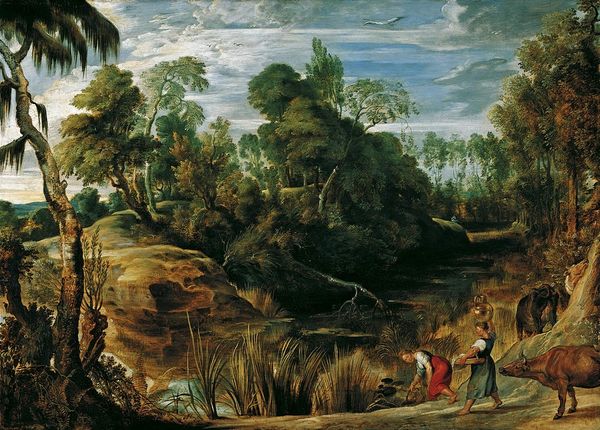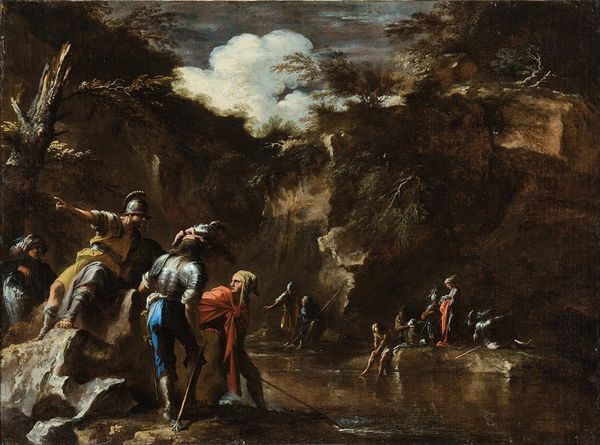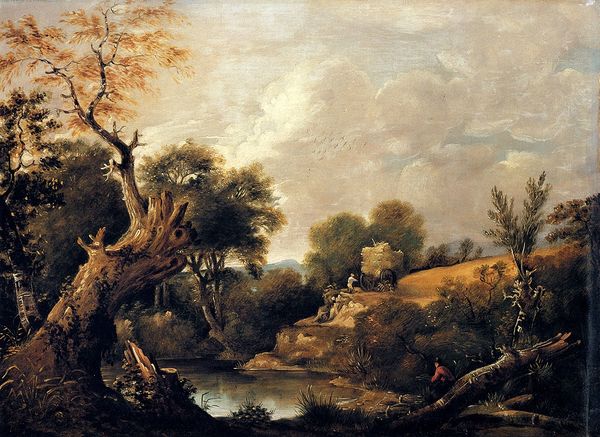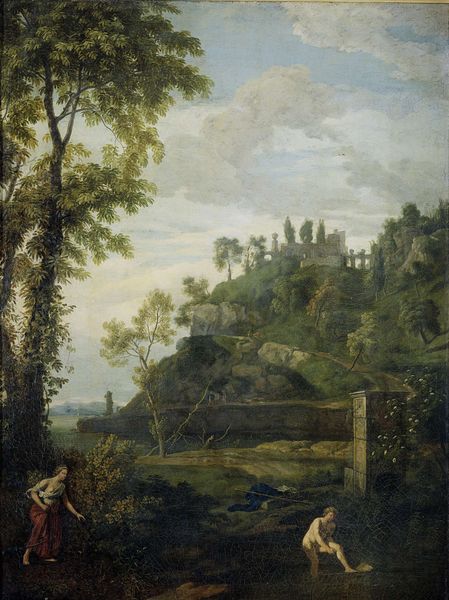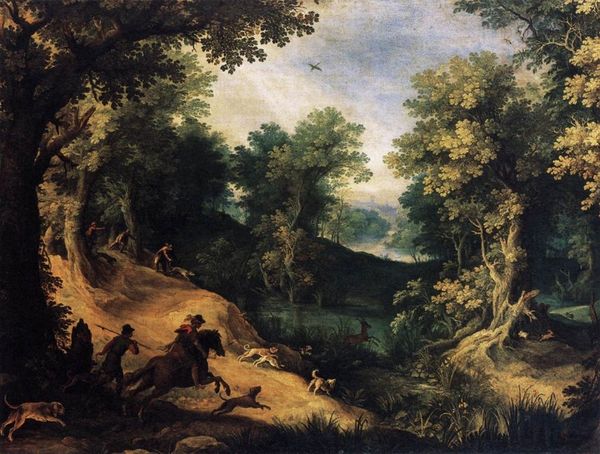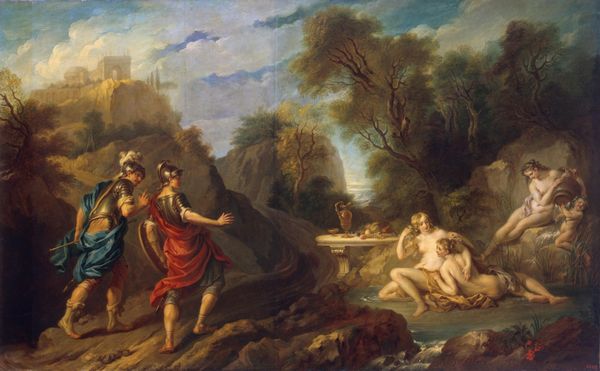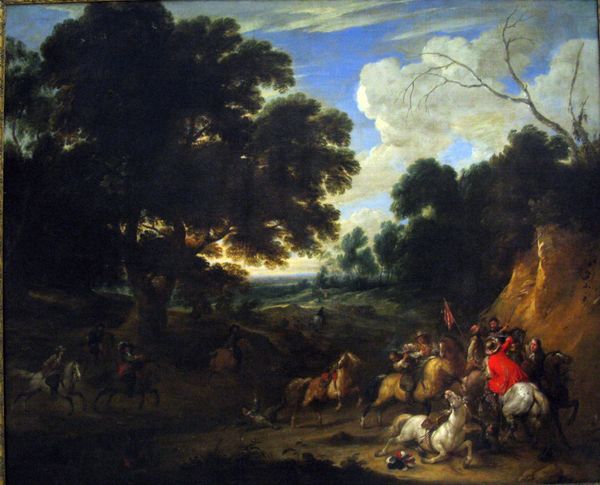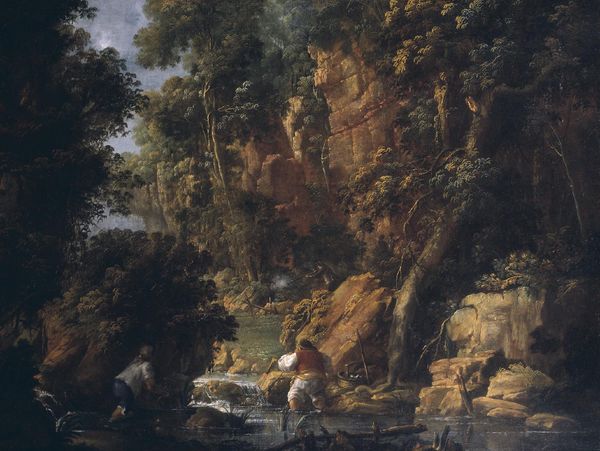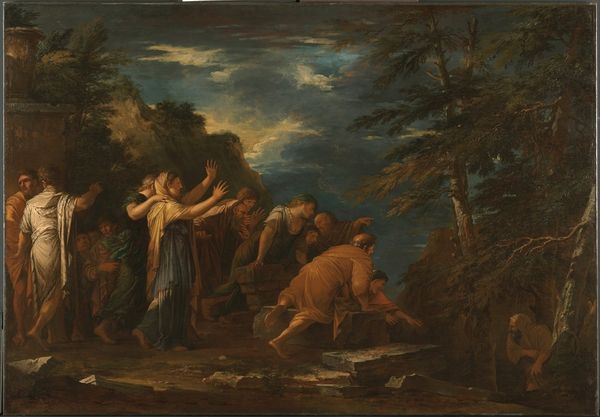
oil-paint
#
narrative-art
#
baroque
#
oil-paint
#
landscape
#
figuration
#
oil painting
#
history-painting
Copyright: Public domain
Curator: We're looking at Adam Elsheimer’s “Tobias and the Angel,” painted around 1606. It presents a scene from the Book of Tobit. Editor: My immediate thought is how earthy and dimly lit it is. Even though there’s landscape, there is this enveloping darkness, and what light there is seems so precious. It's intriguing how Elsheimer's use of oil paint can evoke such varied light effects. Curator: Precisely. This work marks a significant shift in landscape painting, with its emphasis on naturalism and nocturnal effects. He departs from conventional depictions of religious scenes by integrating it into a realistic, accessible world, a trend rising among the patrons and the wider public for art with relatable moral stories. Editor: Right. I mean, consider the materials used. It is an oil painting. And consider how unusual to display what is supposedly divinely lit on such readily obtainable source like oil; how can a single entity that relies on earthly components provide that holy experience for audiences? It challenges notions of art's purpose within the art market in the early modern period. Curator: Very true, and this is an intellectual statement considering that painting was gaining a place among the learned disciplines like history and rhetoric. It also marks shifts in patronage. Wealthy patrons began to support painters with intellectual vision. It signaled high social standing. Editor: Yes, patronage changed painting and culture, and how works like this challenge definitions of sacred representation. Are there further factors involved in these changing standards of art’s consumption that helped make it commercially successful during the artist’s period? Curator: Absolutely. One key factor was the expansion of art markets. No longer restricted to aristocratic circles or the church, the market evolved into a commercial force. It fueled experimentation like Elsheimer’s in order to entice increasingly more sophisticated art consumers. Editor: Examining the materiality and contextual aspects reveals Elsheimer's skillful navigation within these cultural shifts, bridging traditional artistry with contemporary consumer desires. Curator: It really does highlight the convergence of spiritual, social, and economic forces during the Baroque era. Editor: Agreed. It makes you rethink the artist’s place within systems of belief, materiality and value in society at large.
Comments
No comments
Be the first to comment and join the conversation on the ultimate creative platform.
